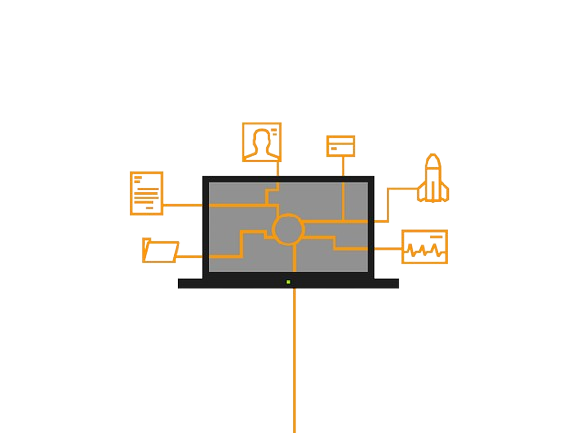
What is Phishing? Definition, Attack Techniques, and Risks
Phishing is a type of scam where attackers try to trick people into giving away personal information like passwords or financial details. They do this by pretending to be someone trustworthy, like a bank or a company. They might use emails, texts, or social media messages that look real but are actually fake.
Phishing often plays on people’s emotions to make them act quickly. This type of scam has been around for a long time and is still very common. According to data from 2024, scammers send out at least 31,000 phishing attacks every day, which means there are 3.4 billion phishing emails sent each day. This doesn’t even include phishing through social media or text messages.
Phishers usually want to steal money. Sometimes, they trick people into making a bank transfer. Other times, they use malware to gather more information about individuals or companies, which can then be sold. Emails are the most common way phishers operate, and some are so well-crafted that they can be hard to distinguish from real ones.
How Does Phishing Work?
Phishing works by creating believable reasons for people to share sensitive information. Here are the basic steps of a phishing attack:
- The Information (Bait): Scammers start by creating a lure, often an email or text that looks like it’s from a trusted source like a bank or a business. They try to make it look real by using official logos, similar email addresses, and language that seems authentic.
- The Promise (Hook): Next, phishers offer a strong reason for people to act quickly. This could be a promise of a reward, like winning a prize, or a threat, like an account being suspended. The goal is to create a sense of urgency or curiosity, leading people to act without thinking.
- The Attack (Catch): Finally, phishers achieve their goal when the targets click on suspicious links or visit fake websites and enter their login details. This can lead to stolen personal information or malware being installed.
Why is Phishing a Problem?
Phishing is a serious issue because it affects millions of people around the world each year. It is very effective, requires little effort from scammers, and can cause a lot of financial damage. Phishing attacks are increasing and are a major threat to both individuals and businesses.
Phishing Risks for Individuals
For individuals, phishing can lead to:
- Identity Theft: If phishers get your personal information, they might steal your identity and commit fraud.
- Loss of Money: Phishers may trick you into giving them access to your bank accounts or credit cards, allowing them to steal money or make unauthorized purchases.
- Malware Installation: Some phishing attacks trick people into downloading malware that can steal information from their devices.
- Privacy Invasion: Phishers can access your personal information, hijack your accounts, or even block access to your personal files.
Phishing Risks for Businesses
For businesses, phishing can cause:
- Damage to Reputation: If sensitive information is stolen, it can harm the company’s reputation.
- Loss of Sensitive Data: Phishers might steal trade secrets or intellectual property.
- Financial Loss: Phishing attacks can result in millions of dollars in damage due to lost investments, fines, ransomware, and more.
- Hijacked Systems: Successful phishing attacks can prevent businesses from accessing crucial files, causing major disruptions.
The Most Common Types of Phishing Attacks
Here are some common phishing techniques:
- Email Phishing: This is the most common type, where attackers use email to trick people into clicking on malicious links or providing personal information. This includes variations like spear phishing, whaling, and clone phishing.
- Vishing: This stands for voice phishing. Attackers call their victims and try to scare them into giving personal information, like claiming there’s an issue with their credit card.
- Smishing: This is SMS phishing, where attackers send text messages that appear to be from a legitimate organization. These messages often contain links to fake websites.
- Angler Phishing: This type happens on social media, where attackers pose as customer support to steal personal data from users.
Real-Life Examples of Phishing Attacks
Here are a few examples:
- Facebook Security Alert Scam (2018): Fake security alert emails claimed to be from Facebook and led users to a fake login page where their credentials were stolen.
- Coinbase Unauthorized Login Attempt Scam: During the COVID-19 pandemic, emails claimed there was an unauthorized login attempt on Coinbase accounts, leading users to a fake site where their credentials were stolen.
- Bank of America Security Alert Scam (2021): Emails claimed there was suspicious activity on accounts and directed users to a fake site to verify their identity, resulting in stolen funds and compromised accounts.
How to Recognize Phishing Attempts
To spot phishing, watch for:
- Sense of Urgency: Scammers often create a sense of urgency to make you act quickly without thinking.
- Spelling and Grammar Errors: Phishing messages often contain errors or a strange tone.
- Unexpected Attachments or Links: Be cautious of attachments or links you weren’t expecting. Use link-checker tools to verify suspicious links.
- Generic Greetings: Phishing emails might use generic greetings like “Dear customer” instead of your name.
- Familiarity with the Sender: If the email or message is from an unknown company or looks suspicious, double-check its legitimacy by contacting the company directly.
What to Do in Case of Phishing
If you suspect phishing or have fallen victim:
- Verify the Sender: Check if the email or message is from a known source before clicking any links.
- Contact the Company: If the email claims to be from a known company, contact them through official channels to verify its legitimacy.
- Report and Delete: Report phishing attempts and delete suspicious emails.
- Change Passwords: If you clicked on a phishing link, change passwords for your important accounts and monitor your financial accounts for unusual activity.
- Contact Your Bank: If you entered banking information on a fake site, report it to your bank immediately.
How to Protect Yourself Against Phishing
To protect yourself:
- Use Antivirus Software: Reliable antivirus software can help protect against phishing.
- Enable Two-Factor Authentication (2FA): This adds an extra layer of security to your accounts.
- Use Spam Filters: These can prevent phishing emails from reaching your inbox.
- Get an Attachment Filter: Tools like OhioVPN’s Threat Protection Pro™ can help block malicious content.
- Learn to Recognize Phishing: Practice spotting phishing signs to protect yourself.
- Keep Software Updated: Updates often include security fixes.
- Use a Password Manager: This helps create and store unique passwords for your accounts.
- Stay Vigilant: Always verify the authenticity of emails or websites.
Staying safe online starts with being cautious about what you click and where you provide your information.

Hi, I’m Chibuzor Abraham from Nigeria. I love technology, especially VPNs, which protect your online privacy. I manage Ohiovpn.us, where I review VPN services for Ohio. Our reviews look at speed, security, and ease of use to help you find the best VPN. If you buy through our links, we get a small commission, which helps support our site at no extra cost to you.

